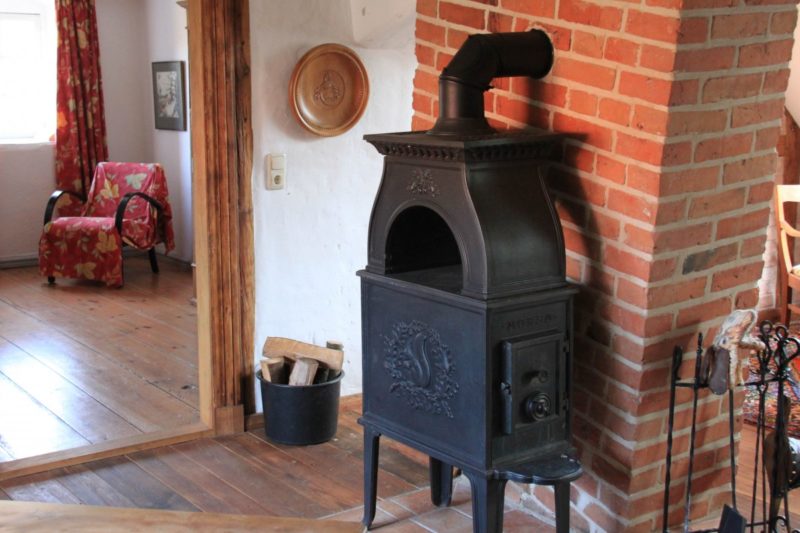A wood-burning stove’s ability to burn cleanly cannot be understated, and understand how to remove creosote from wood stove. In addition, knowing how important it is to have a clean stove may help you make better choices when it comes to purchasing and installation.
When evaluating brick stove options, it’s critical to consider how to keep a soapstone or brick stove addition in top functioning shape. A well-maintained wood stove burns more effectively while also being safer.
Around 7% of all house fires in the United States are caused by creosote accumulation in the chimney, according to the Environmental Protection Agency. So despite how great wood heating is, we must safeguard the Environmental Protection Agency, around and property of those we love.
Tips To Remove Creosote From Wood Stove
In this section, we haven’t creosote buildup from a wood stove. But, preventing them is essential so that when it’s time to clean it up, everything will be more accessible. So, how to remove creosote from wood stove?
Tip #1. Set a time frame
When you’re using the stove every day for the whole winter, it’s easy to forget to clean it. My first piece of advice is to set up a cleaning plan that you can stick to. Keep in mind that creosote accumulates within the stove pipe with each usage and should be avoided at all costs. Set a reminder on your phone or calendar. What’s the time frame for this? That is, of course, dependent on several variables.
Tip #2. Choose the right wood
Knowing how to split wood properly is just as vital as picking the perfect kind of wood to burn. Cleaner wood fires produce less smoke, which means fewer pollutants and a less amount of creosote buildup in your fireplace’s flue. How much wood you can cut, split, and burn depends on where you live and what kind of wood you choose to use in your wood-burning cookstove or heater. However, always burn seasoned or dried wood on your stove if at all feasible. If I were you, read on how to line a wood stove with fire brick.
For lighting a fire, a tamarack is a great option in our region. Tamarack has a long burn time and produces minimal creosote, so your chimney will have less ash buildup from burning wood. It also produces very fine ash, although in very little quantities.
As a result, dense hardwoods like maple and oak produce more heat since their energy content is higher. Moreover, they have a higher melting point and maintain their shape for a longer period when heated in the oven. Less dense softwoods like birch and pine burn out more quickly. A fireplace made of slow-burning wood was more energy efficient since it went out earlier in the season. Modern stove models offer more control over the combustion process than the stoves we grew up with, so they can burn a broader variety of wood.
Tip #3. Avoid burning trash
Large volumes of trash, especially glossy or slippery paper and plastics, should not be burned over a wood fire. Chemically treated wood, whether pressure-treated or painted, should never be burnt. These substances have the potential to discharge toxic vapors into your house. Even a tiny amount of those items might have seriLikewise, chemical effects on the sinuses so better avoid them.
Tip #4. Clean regularly
Regular cleaning and safety inspections, on the other hand, are a requirement. These things may or may not be required for the job to be done correctly and safely, depending on the type of stove you have. Several factors go into cleaning your chimney, including the type of stove you use, depending on the furnace you have, the wood you burn, and any preventative precautions you take. Make sure the stove has cooled down enough to handle the heating process safely.
Once you’re on top of the roof, look for any evidence of wear or damage to the pipe. Resolve any issues that may have arisen. Follow the manufacturer’s directions while using the chimney brush.
Your stove’s manual may include specific requirements for how often you should clean the chimney. First, with a brush, remove creosote buildup from the pipe’s top and within the stove. Next, sweep the ash creosote out of the tube and clean it. To give you a clear perspective, know how to reduce Creosote buildup and keep your fireplace gas clean.
Please make sure the ash pan is clean by sweeping it. Place the ash bucket outdoors after emptying the ash pan in case of cinders. It’s the perfect time of year to clean your glass doors too. This is the first time you’ve used your stove after it’s been thoroughly cleaned. Keep the ashes if you plan on using them in your garden.
It’s A Wrap!
It also helps to know how to remove creosote from wood stove during the previous twenty-four hours by warming it. Because of this easy daily practice, the stove’s creosote buildup can be reduced, and it is now burning as effectively as possible. Do you want to read more about stoves? Read on how to vent a wood stove without a chimney. There you have it! Thank you for reading. We genuinely appreciate it.

